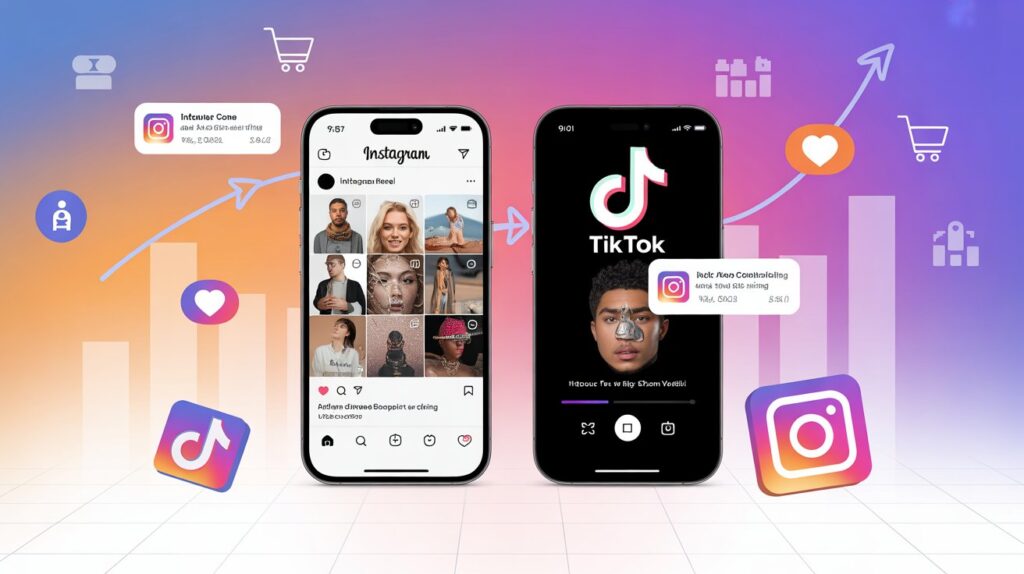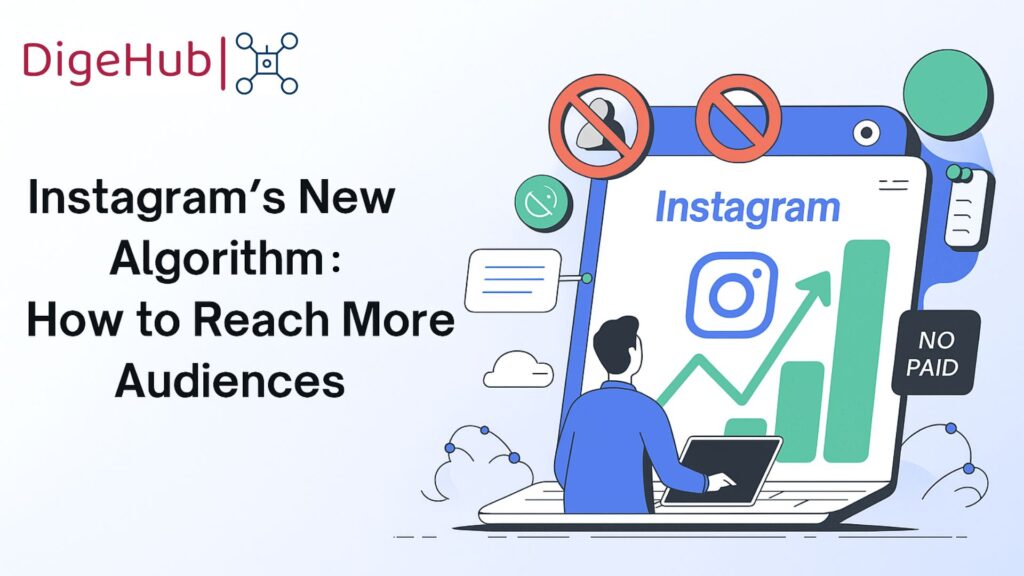Instagram Reels vs TikTok: Which Platform Is Better for Getting Sales in 2025?

Short form video content has changed digital marketing in a crazy way. Two platforms conquer this space: Instagram Reels and TikTok. But if you’re a business owner or marketer wondering which platform actually drives more sales, you’re not alone.
With e commerce booming and attention spans going down, knowing where to focus your ad spend and content creation matters more than ever. In this detailed comparison, we break down everything you need to know to decide where to invest Instagram Reels or TikTok to boost your bottom line.
- Instagram Reels vs TikTok: Which Platform Is Better for Getting Sales in 2025?
- Instagram Reels and TikTok: A Quick Overview
- How Each Platform Supports Sales
- Audience Demographics and Behavior
- Features That Influence Buying Decisions
- Ad Integration and Shopping Tools
- Which Platform Offers Better Organic Reach?
- Creator Ecosystem and Influencer Marketing
- Comparing Performance Metrics
- Case Studies: Brands Winning on Reels and TikTok
- Key Differences in Driving Conversions
- Which Platform is Best for Your Business?
- Final Verdict: Reels or TikTok?
- FAQs
Instagram Reels and TikTok: A Quick Overview
Instagram Reels launched in 2020 as Meta’s answer to TikTok. It seamlessly with the Instagram ecosystem, which includes Shop, Stories, and DMs, giving Reels a significant e commerce edge.
TikTok, on the other hand, popularized the short form video trend. With over 1.5 billion monthly active users, it has become a cultural phenomenon. TikTok’s algorithm based feed and viral nature give creators and brands incredible reach.
How Each Platform Supports Sales
Both platforms have introduced native tools for e commerce, but they differ significantly in how they drive sales.
Instagram Reels
- Integrated Instagram Shopping experience.
- Product tags directly in Reels.
- Checkout without leaving the app (for U.S. users).
- Seamless integration with digital marketing strategies.
TikTok
- TikTok Shop now available in more regions.
- Livestream shopping events.
- Links in bio and description.
- Third party integrations like Shopify and WooCommerce.
Audience Demographics and Behavior
Understanding your target audience is key. Here’s how they stack up:
- Age range: 25–44
- Professionals, creators, lifestyle influencers
- Higher trust and purchasing power
TikTok
- Age range: 16–34
- Gen Z heavy
- Impulse buys, trend driven behavior
If your business targets younger people, TikTok may offer quicker gain. For high intent buyers, Instagram Reels wins.
Features That Influence Buying Decisions
- Instagram Reels:
- Carousel CTAs in Stories and Reels
- Stronger visual branding
- UI/UX design influence from parent platform
- TikTok:
- Native viral trends
- Relatable UGC (User Generated Content)
- Entertaining content first approach
Ad Integration and Shopping Tools
- Meta Ads Manager with granular targeting
- Story + Reel + Feed ad campaigns
- Product tagging with catalog sync
TikTok
- TikTok Ads Manager: Great for fast testing
- Spark Ads: Boost organic posts
- Dynamic showcase ads for products
If your business already runs Facebook or Instagram Ads, Reels is an easy add on.
Which Platform Offers Better Organic Reach?
TikTok still has the edge in organic reach, thanks to its algorithm first, interest driven model. Even small creators can go viral.
However, Instagram’s algorithm now boosts Reels more aggressively and favors consistent brand posting — making it more reliable for long term sales funnels.
Creator Ecosystem and Influencer Marketing
Both platforms support influencer partnerships, but they differ in ecosystem maturity.
- Instagram influencers tend to have polished content and are perceived as more trustworthy.
- TikTok influencers drive more viral trends but can lack conversion consistency.
If you’re launching a product and want authentic buzz, TikTok is ideal. But for brand partnerships, Instagram remains king.
Explore our SMM services to identify the right influencer for your brand.
Comparing Performance Metrics
| Metric | Instagram Reels | TikTok |
|---|---|---|
| Organic Reach | Moderate to High | Very High |
| Engagement Rate | 1.5% – 3.5% | 5% – 9% |
| Conversion Rate | 2% – 5% | 1% – 4% |
| Average Order Value | Higher | Lower |
| Brand Perception | Polished, Professional | Trendy, Authentic |
Case Studies: Brands Winning on Reels and TikTok
- Nike used Instagram Reels to launch new collections with athletes and saw a 40% lift in conversions.
- Duolingo leveraged TikTok trends and viral humor to double their app installs within months.
- Small business boutiques using Reels saw a 30% increase in sales with weekly product reels.
If you’re ready to build apps to support your product like Duolingo did, check out our services.
Key Differences in Driving Conversions
| Key Factor | Instagram Reels | TikTok |
|---|---|---|
| Shoppable Video | Native support | Regional roll out |
| Ad Integration | Full Meta suite | Independent platform |
| E-commerce Sync | Shopify, Woo, others | Shopify, Ecwid |
| Target Audience | Professionals, Gen Y/Z | Gen Z primarily |
Which Platform is Best for Your Business?
Ask yourself:
- Who is your target audience?
- Are you selling impulse buy or high ticket items?
- Do you have an existing SEO strategy that aligns with content?
- Is influencer marketing part of your plan?
If you’re scaling a local business, combine Instagram Reels with location targeted digital marketing for maximum impact.
Final Verdict: Reels or TikTok?
Instagram Reels is more integrated with e commerce and better suited for high ticket items and B2B. TikTok excels at awareness and viral reach, especially for new brands or impulse buys.
Smart marketers use both — but tailor content uniquely for each platform.
Want to boost your sales through short form videos? Let our experts craft high converting Reels and TikToks tailored for your niche. Explore our social media marketing services today.
FAQs
1. Which platform is better for small businesses?
TikTok is great for fast visibility, while Instagram Reels is better for building trust and long term customers.
2. Can I sell products directly on Instagram Reels?
Yes. With Instagram Shopping, users can buy without leaving the app. Product tags help increase sales.
3. Are TikTok ads cheaper than Instagram Reels ads?
Generally, yes. TikTok ads can be more cost effective, but Instagram offers more precise targeting via Meta Ads Manager.
4. Is content creation easier on one platform?
Both platforms offer easy editing tools. TikTok leans toward trends and humor, while Instagram favors polish and brand storytelling.
5. Can I use the same video on both platforms?
Yes, but tailor each to fit the platform’s audience and best practices for engagement.
